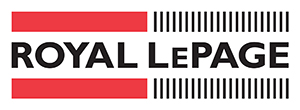2021 Stress Test Rules
2021 New Mortgage Rules
As of June 1, 2021, in order to pass the mortgage stress test, you’ll need to qualify at your contracted mortgage interest rate plus 2% or 5.25%, which is the benchmark rate (or floor) used to qualify uninsured and insured mortgages. For example, if you are applying for a mortgage at a rate of 3.65%, then your lender will assess you as if you were paying your home loan at 5.65% (3.65% + 2%) since 5.65% is greater than the benchmark rate.
Because of this stress test, the majority of new homebuyers have had their purchasing power slashed by as much as 20% because they’re only eligible for a lower loan amount at the mortgage stress-tested rates. The new stress test rules have also made it more difficult for current homeowners to refinance or renew their mortgages.
Impact Of The Mortgage Stress Test On Canadians
There are two different qualifying rates under the mortgage stress test. Depending on the mortgage interest rate you get, your bank will calculate your mortgage affordability with one or the other. If you were to qualify for a mortgage rate of 3.25 or below, you’ll undergo the stress test using the Bank of Canada qualifying rate of 5.25%. However, if you qualify for a mortgage interest rate above 3.25%, then your bank will use the other rate which is the mortgage contract interest rate plus 2%.
Mortgage Stress Test Example
Let’s say you live in Ontario and have an annual household income of $100,000 and will be putting a $50,000 down payment. Plus, you were able to qualify for a 2.5% mortgage rate, which has a 5-year term, amortized over 25 years. How much mortgage would you be able to afford?
According to the CMHC mortgage affordability calculator, you’ll be able to qualify for a home valued up to $637,329* under the 5.25% qualifying rate.
